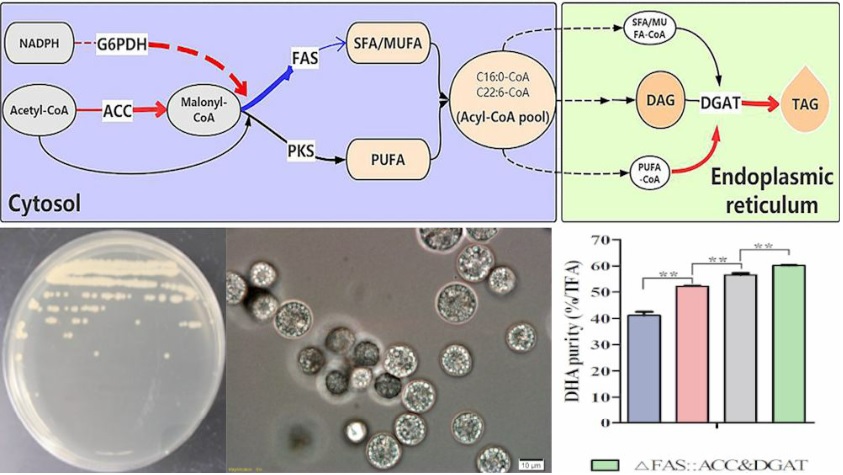Researchers Developed a Cell Factory to Produce High-purity DHA
Docosahexaenoic acid (DHA, C22:6) is an important nutrient for the brain and visual development of newborns. It is also widely applied in pharmaceutical and food industries.
Aurantiochytrium has become one of the representative strains for DHA production due to its high biomass and high lipid content.
Recently, researchers from the Qingdao Institute of Bioenergy and Bioprocess Technology (QIBEBT) of the Chinese Academy of Sciences (CAS) have developed a novel strain producing high-purity DHA through metabolic engineering strategy.
The enhanced DHA purity not only improves the product quality of DHA oil, but also reduces the purification processing cost.
This study was published in the journal Agriculture and Food Chemistry on August 20.
The strategy includes both partial deactivation of the competing pathway of DHA biosynthesis, by disrupting one copy of the fatty acid synthase gene, and strengthening of substrate supply and triacylglycerol synthesis, by the overexpression of acetyl-CoA carboxylase and diacylglycerol acyltransferase.
The DHA contain of the mutant was 331 mg/g, of which DHA accounted for 61% of the total fatty acids.
Moreover, the cell growth rate, biomass, and lipid yield of the novel strain have not changed significantly, ensuring that the new strain could meet the industrial requirements.

A high-purity DHA cell factory created using metabolic engineering methods. (Image by WANG Sen and SONG Xiaojin)
(Text by WANG Sen and SONG Xiaojin)
Contact:
CHENG Jing
Qingdao Institute of Bioenergy and Bioprocess Technology, Chinese Academy of Sciences
Tel: 86-532-80662647/80662622
E-mail: chengjing@qibebt.ac.cn